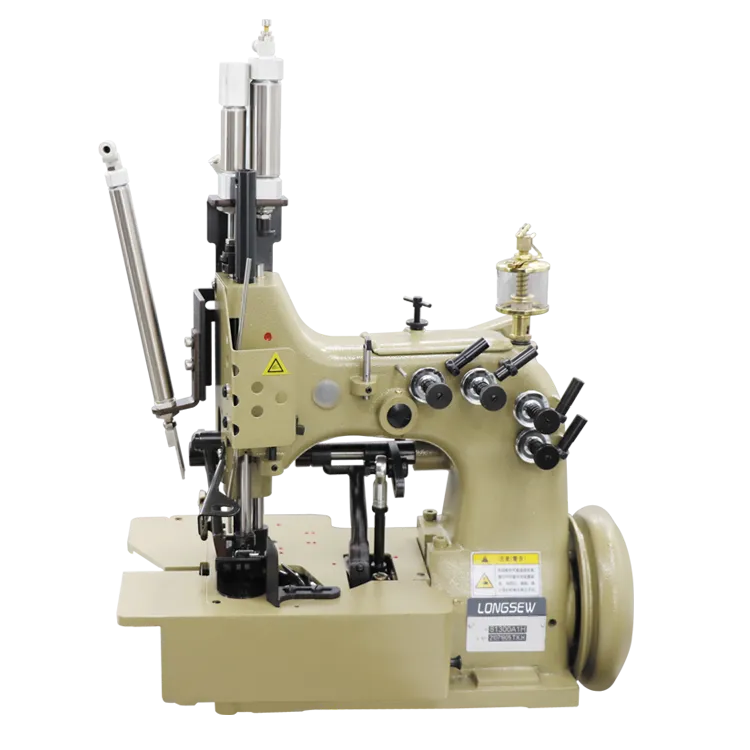Jan . 20, 2025 03:18
Back to list
FIBC Bag / Jumbo Bag / Bulk Bag Single Needle Lock Stitch Top & Bottom Feeding Sewing Machine GSC367 /GSC367TD /GSC367TDZ/ GSC367-L
Unlocking the Mystery of Lockstitch The Heart of Modern Sewing Machines
In the realm of industrial sewing, the lockstitch machine often shines as a workhorse, famed for its high-speed stitching options that amplify productivity. These machines typically feature advanced mechanics, allowing for a consistent outcome, regardless of the complexity of the fabric being used. Additionally, many modern lockstitch machines offer customizable settings to accommodate various stitches per inch, enabling creators to adjust their machine to meet the demands of their particular projects with precision and efficiency. Despite the sophistication of modern lockstitch machines, the principle behind the lockstitch remains delightfully simple. The machine operates with two primary components the needle that carries the upper thread and a bobbin mechanism below which holds the lower thread. As the needle descends, it pierces the fabric and is met at its nadir by the oscillating bobbin. This movement ensures that the two threads intertwine, creating the sought-after lockstitch that fortifies projects and survives the test of time and tension. Those new to sewing may initially find the terminology bewildering or the mechanical workings complex, but fear not. Familiarity with sewing machines gradually reveals the lockstitch's accessibility and reliability. Beginners and experts alike benefit from its ease-of-use, though mastery of its associated machines opens up an expansive world of potential projects. Whether creating clothing, home decor, or art, the lockstitch serves as a steady companion, turning aspirations into tangible, enduring realities. Ultimately, the lockstitch’s contribution to the textile industry is monumental, enabling innovations and efficiencies that have endured for centuries. As the stitching landscape continues to evolve with technological advancements, the lockstitch remains an essential, trusted component likely to weave its way through countless projects for generations to come. Understanding its role and operation not only enriches one's sewing experience but also extends respect to its historic and ongoing influence within the craft.


In the realm of industrial sewing, the lockstitch machine often shines as a workhorse, famed for its high-speed stitching options that amplify productivity. These machines typically feature advanced mechanics, allowing for a consistent outcome, regardless of the complexity of the fabric being used. Additionally, many modern lockstitch machines offer customizable settings to accommodate various stitches per inch, enabling creators to adjust their machine to meet the demands of their particular projects with precision and efficiency. Despite the sophistication of modern lockstitch machines, the principle behind the lockstitch remains delightfully simple. The machine operates with two primary components the needle that carries the upper thread and a bobbin mechanism below which holds the lower thread. As the needle descends, it pierces the fabric and is met at its nadir by the oscillating bobbin. This movement ensures that the two threads intertwine, creating the sought-after lockstitch that fortifies projects and survives the test of time and tension. Those new to sewing may initially find the terminology bewildering or the mechanical workings complex, but fear not. Familiarity with sewing machines gradually reveals the lockstitch's accessibility and reliability. Beginners and experts alike benefit from its ease-of-use, though mastery of its associated machines opens up an expansive world of potential projects. Whether creating clothing, home decor, or art, the lockstitch serves as a steady companion, turning aspirations into tangible, enduring realities. Ultimately, the lockstitch’s contribution to the textile industry is monumental, enabling innovations and efficiencies that have endured for centuries. As the stitching landscape continues to evolve with technological advancements, the lockstitch remains an essential, trusted component likely to weave its way through countless projects for generations to come. Understanding its role and operation not only enriches one's sewing experience but also extends respect to its historic and ongoing influence within the craft.
Latest news
-
Boost Production Efficiency with a Pattern Sewing MachineNewsAug.29,2025
-
Industrial Excellence with the Best Heavy Duty Sewing MachineNewsAug.29,2025
-
Precision and Power with the Best Pattern Sewing MachineNewsAug.29,2025
-
Reliable Bulk Packaging Starts With the Right FIBC Sewing MachineNewsAug.29,2025
-
Advanced Packaging Solutions: Elevate Productivity with Jumbo Bag Sewing Machine and Industrial Stitching EquipmentNewsAug.29,2025
-
High-Performance Solutions for Bulk Packaging: FIBC Sewing Machine and MoreNewsAug.29,2025
-
Maximize Efficiency with an Industrial Cylinder Arm Sewing MachineNewsAug.28,2025


























